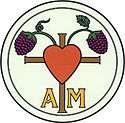Dunkard Brethren
| Part of a series on the |
| Schwarzenau Brethren (the German Baptists or Dunkers) |
|---|
 |
| Background |
| Christianity · Protestantism · Anabaptism · Radical Pietism · Radical Reformation |
| Doctrinal tenets |
| Non-creedalism · Trine baptism · Love feast · Feet washing · Holy kiss · Free church · Anointing with oil · Non-resistance · Pacifism · The Brethren Card |
| People |
| Alexander Mack · Louis Bauman · Conrad Beissel · Donald F. Durnbaugh · Vernard Eller · Christoph Sauer · John C. Whitcomb |
| Groups |
|
Brethren Church · Church of the Brethren · Conservative Grace Brethren · Dunkard Brethren · Grace Brethren · Old Brethren · Old Brethren German Baptist · Old German Baptist Brethren · Old German Baptist Brethren, New Conference · Old Order German Baptist Brethren · |
| Related movements |
| Amish · Bruderhof · Community of True Inspiration · Hutterites · Mennonites · River Brethren · Quakers |
The Dunkard Brethren are a small group of conservative Schwarzenau Brethren that withdrew from the Church of the Brethren in 1926.
Name
The name Dunkard or Dunker is derived from the Pennsylvania German word dunke, which comes from the German word tunken, meaning "to immerse" or "to dip". This emphasizes the method of baptism observed by all of the various branches of Schwarzenau Brethren — trine immersion.
History
The Dunkard Brethren have their roots in a protestant movement, known as Schwarzenau Brethren or Dunkards. This movement began, when Alexander Mack and seven other believers did baptism by immersion in the Eder river in Germany in 1708.
The Church of the Brethren represented the largest body of churches that descended from this original pietist and Anabaptist movement. For the history until 1926 see Church of the Brethren: Early history and Church of the Brethren: The Great Schism.
Early in the 20th century some members of Church of the Brethren, the largest of the branch of the Schwarzenau Brethren, began to feel that there was a drift away from the old apostolic standards. Benjamin Elias Kesler (1861-1952), an Elder of the Church of the Brethren in Missouri, addressed these concerns in a twenty-page monthly paper, called "The Bible Monitor", that he published starting in October 1922. In 1923, Kesler was therefore refused a seat at the Annual Conference. Because of this his conservative sympathizers held their own separate meeting in the next three years. During the Annual Conference in 1926 concerns nearly identical to those of Kesler and his sympathizers were addressed, but not solved in a way that satisfied Kesler and his followers. Subsequently the Kesler group withdrew from the Church of the Brethren and formed the Dunkard Brethren Church in 1926.[1]
Belief and Practice
Dunkard Brethren practice believer's baptism. A believer is immersed three times, once in the name of the Father, once in the name of the Son, and once in the name of the Holy Spirit. Most of the women of the Dunkard Brethren exhibit the plainness of dress associated with the Old Order Brethren and Old Order and Conservative Mennonites. Women are also expected to wear a plain white cap.
They also practice the holy kiss and the love feast with feetwashing. Divorce is not allowed for members of the church and Life insurances are discouraged. Dunkard Brethren do not swear oaths and do not file lawsuits without permission of the church. The use of alcohol and tobacco is forbidden, as is television. Participation in politics, Labor Unions, gaming and gambling and membership of secret societies like Freemasons are seen as contrary to the Gospel and a pure heart.[2]
Members and Congregations
In 1980 there were 1,035 members in 26 congregations.[3] The Dunkard Brethren Church has 25 congregations in the United States with approximately 900 members. The majority of the churches are located in Pennsylvania, Maryland, Indiana, Iowa, Kansas, California, and Ohio. They support a mission among the Navajo Indians in New Mexico, and a mission in Africa.
Publication
The church's publication, a monthly paper that is published monthly since October 1922, is called The Bible Monitor.
Literature
- Keith M. Bailey: They Counted the Cost: The History of the Dunkard Brethren Church from 1926 to 2008, Nappanee, 2009.
- Donald F. Durnbaugh: Fruit of the Vine, A History of the Brethren 1708–1995, Elgin, Illinois, 1997.
- Donald F. Durnbaugh (editor): The Brethren Encyclopedia, Philadelphia, 1983.
- Cornelius J. Dyck, Dennis Martin, et al. (editors): The Mennonite Encyclopedia, Hillsboro, Canada, 1955-1959.
External links
- Dunkard Brethren Church—unofficial Web Site
References
- ↑ Donald F. Durnbaugh (editor) The Brethren Encyclopedia, Volume I, Philadelphia, 1983, pages 408/9.
- ↑ Donald F. Durnbaugh (editor) The Brethren Encyclopedia, Volume I, Philadelphia, 1983, pages 409.
- ↑ Donald F. Durnbaugh (editor) The Brethren Encyclopedia, Volume I, Philadelphia, 1983, pages 409.